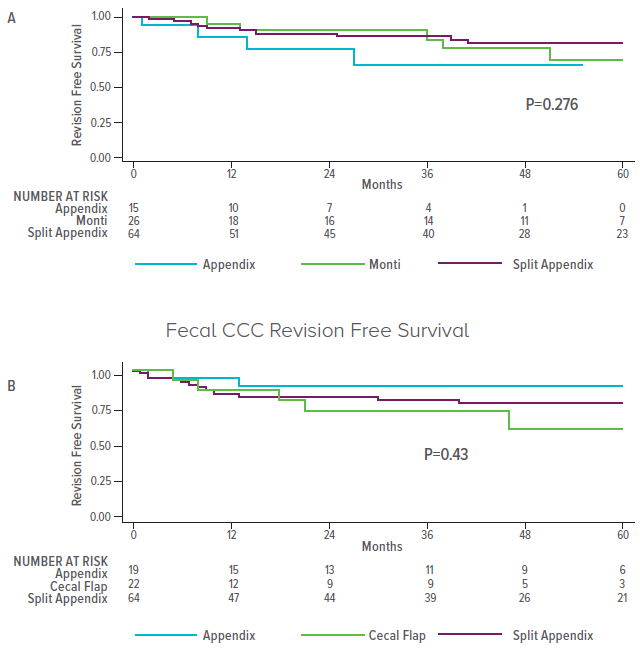Split-Appendix Technique Improves Outcomes for Continent Catheterizable Channels
Published November 2020 | Journal of Pediatric Surgery
In patients undergoing simultaneous urinary and fecal reconstruction, surgeons must create a continent catheterizable channel (CCC) to facilitate bladder and bowel function.
Based on the bowel segment used, there are several methods of creating CCCs—the split-appendix technique, the Monti (using part of the gastrointestinal tract), or appendix-only. Among these, which has the best outcomes?
In a six-year retrospective review of 106 patients, researchers in the Division of Urology compared perioperative and long-term outcomes of the three methods. They found that the split appendix allows for two channels to be created without having to do any bowel resectioning or anastomosis, minimizing morbidity and providing shorter operative times.
These findings contradict previous understanding of the split-appendix technique. Researchers were concerned that splitting the appendix and sharing it amongst the two channels would compromise its blood supply. However, compared to the other more established techniques, this study shows that split-appendix does not affect 30-day complications or long-term revision rates compared to other more established techniques.
“For patients who are considering continent reconstruction, these findings can reassure them that in cases where both channels are to be created, we are able to use the appendix for both channels when technically feasible without compromising outcomes,” says lead author Michael Daugherty, MD. “This decreases morbidity of an already complex surgery.”
Researchers are continuing to follow patients undergoing complex reconstruction and updating the data to include longer-term outcomes. The team is participating in an Enhanced Recovery after Surgery (ERAS) protocol to expedite recovery and decrease lengths of hospital stays for these patients.
Urinary CCC Revision Free Survival
These survival charts indicate that, despite concerns about compromised blood supply, a surgical technique that splits the use of appendix tissue to create continent catheterizable channels to support bladder and bowel function is feasible without compromising outcomes.






